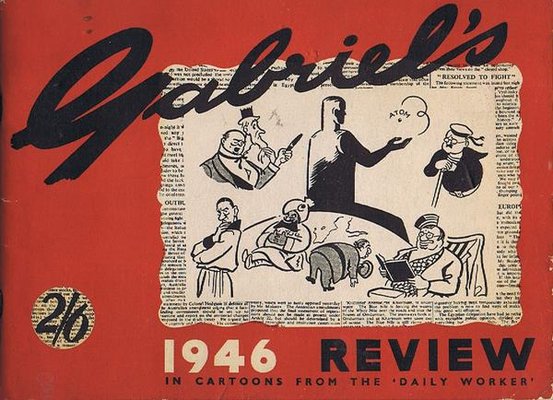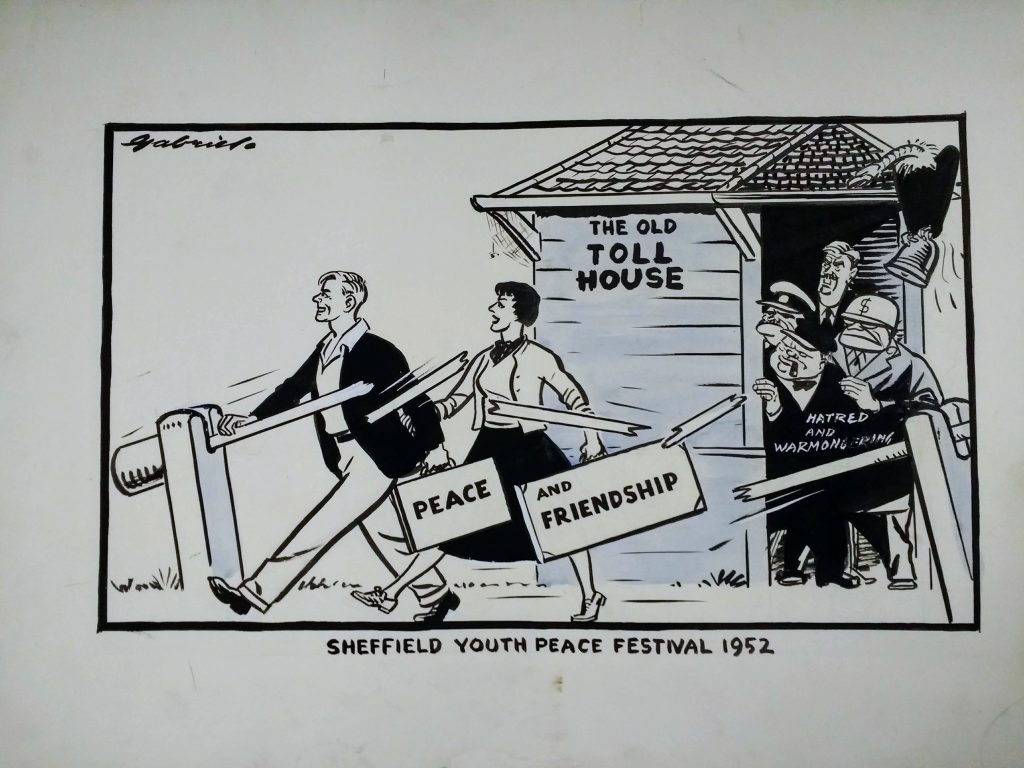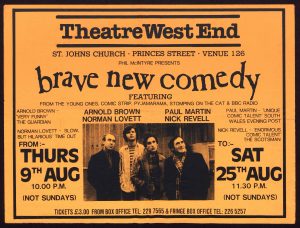Earlier this year Special Collections & Archives hosted two student interns with the generous support of Kent’s Work-Study scheme. Becca and Emily worked on our James Friell collection from the British Cartoon Archive, helping to sort, repackage and list this large collection of cuttings and original artworks. In this first of two posts written by Becca and Emily, they give an overview of Friell’s life and work:

Cover of “Gabriel’s 1946 review in cartoons from the ‘Daily Worker'”, a compendium of his cartoons published that year.
“So you became a cartoonist, but why a political cartoonist? The answer to that was that I grew up in Glasgow in the thirties and I still can’t understand anyone who grew up anywhere in the thirties not being political.”
James Friell (1912-1997), also known by Jimmy Friell, Gabriel, and Field, was a political cartoonist for various British newspapers and television programmes between 1936 and 1988. Born in 1912 in Glasgow to a large Irish Catholic family, Friell showed artistic talent from an early age. He was a bright boy who was offered a scholarship for an academy, which would have led to university, but his father made him turn it down in favour of work. He worked in a solicitor’s office, where he sold a few cartoons to Glaswegian and London newspapers, before pursuing a cartoonist career full-time.
Friell’s first position began in 1936 at The Daily Worker, a Communist party-owned weekly paper whose views fell in line with his own. Here, he took the pen name ‘Gabriel’, after the archangel, and joined the Communist party in 1937. During his time at the paper, Gabriel’s main targets were Churchill, Mussolini, and Hitler, with a good few jabs at the Labour and Tory parties. He was called up to the Royal Artillery during the Second World War but served his time in a factory, due to his known ties to the Communist party. He worked for The Daily Worker until 1956, leaving when he felt he could no longer work for a Communist paper who condemned the evils of capitalism whilst praising the “acknowledged evils” of Communism in Russia.
After a few months out of work, Friell took up a job with the Evening Standard, leaving his pen name Gabriel behind. He worked there for five and a half years, from 1956-1962, now signing his cartoons ‘Friell’. He left the Evening Standard after a new cartoonist was brought in, knowing that no other other paper would hire a hard-left cartoonist and being forced to take on several other pseudonyms to get work. He worked in television for a few years, winning the Bronze Award in 1983 for a television cartoon piece, before moving to his last position at The New Civil Engineer magazine in 1973.
James Friell was discovered by an American professor in 1986 after years of living in obscurity, leading to a History Today article, interviews deposited into the National Library of the Spoken Word, and several lectures for the Americans Social Historians group. He retired in 1988 and died in 1997, aged 84. The Friell collection in the University of Kent’s Special Collections & Archives is lucky to have a wide range of pieces surrounding the cartoonist – from newspaper cartoon cuttings and original artworks from his time at The Daily Worker and Evening Standard, to rough sketches and personal greetings cards. Our next blog post will detail our work with the collection, including some of the challenges that come with attempting to sort such a large and varied collection.




